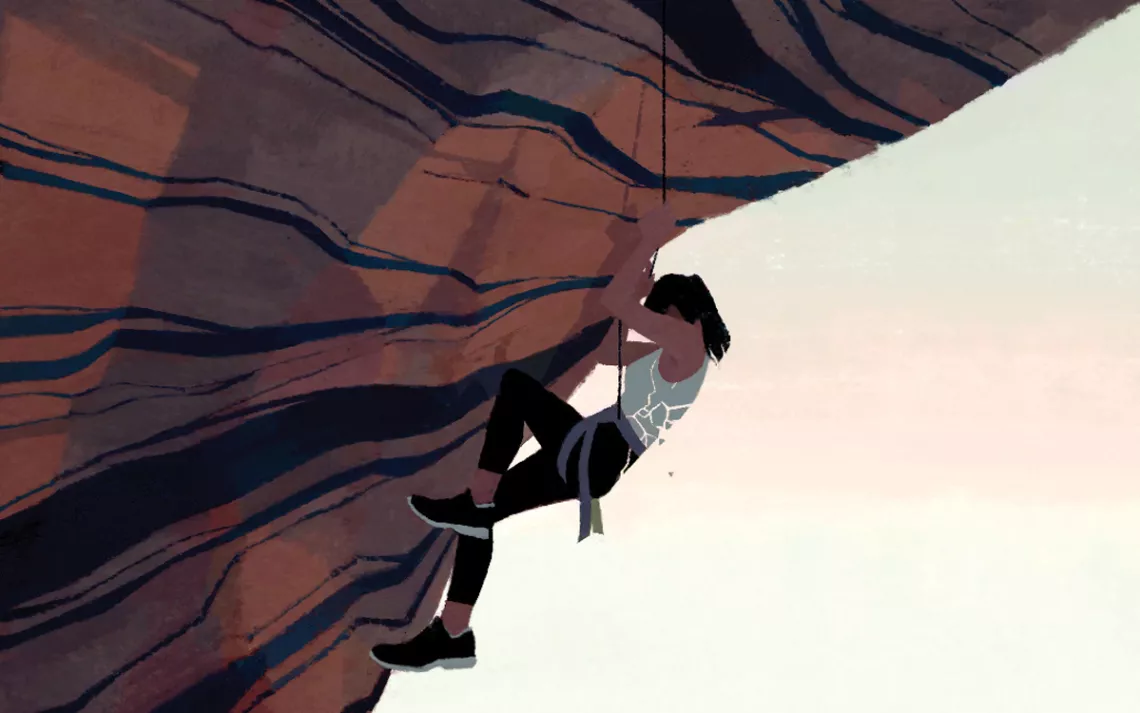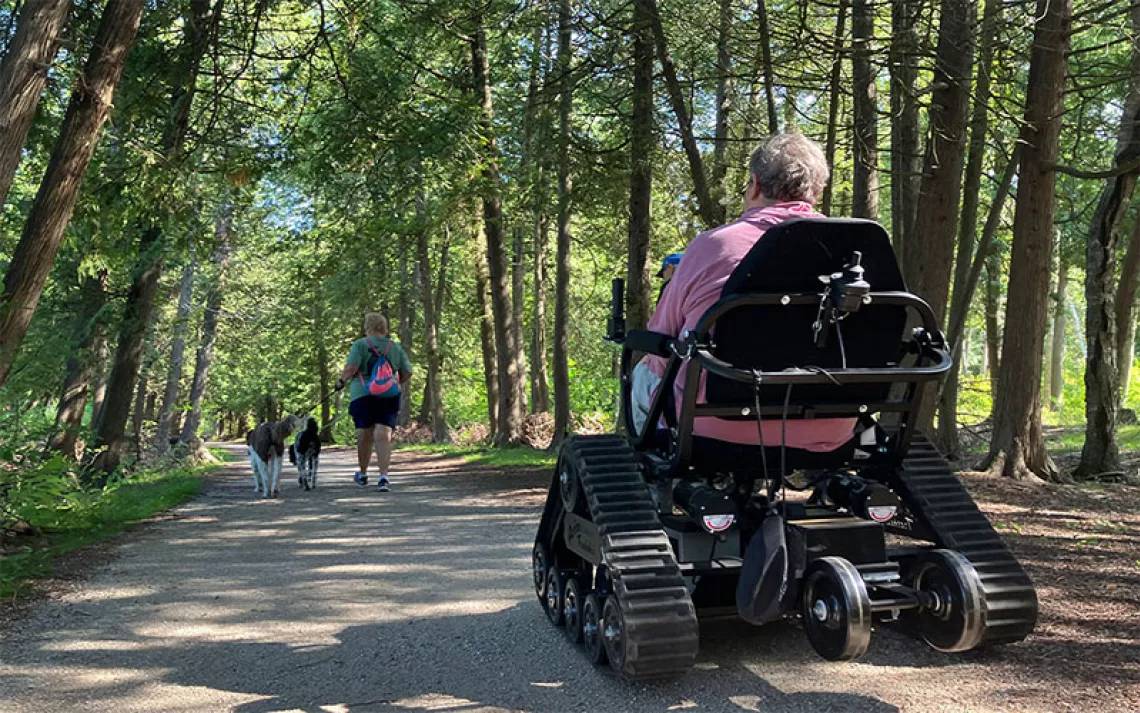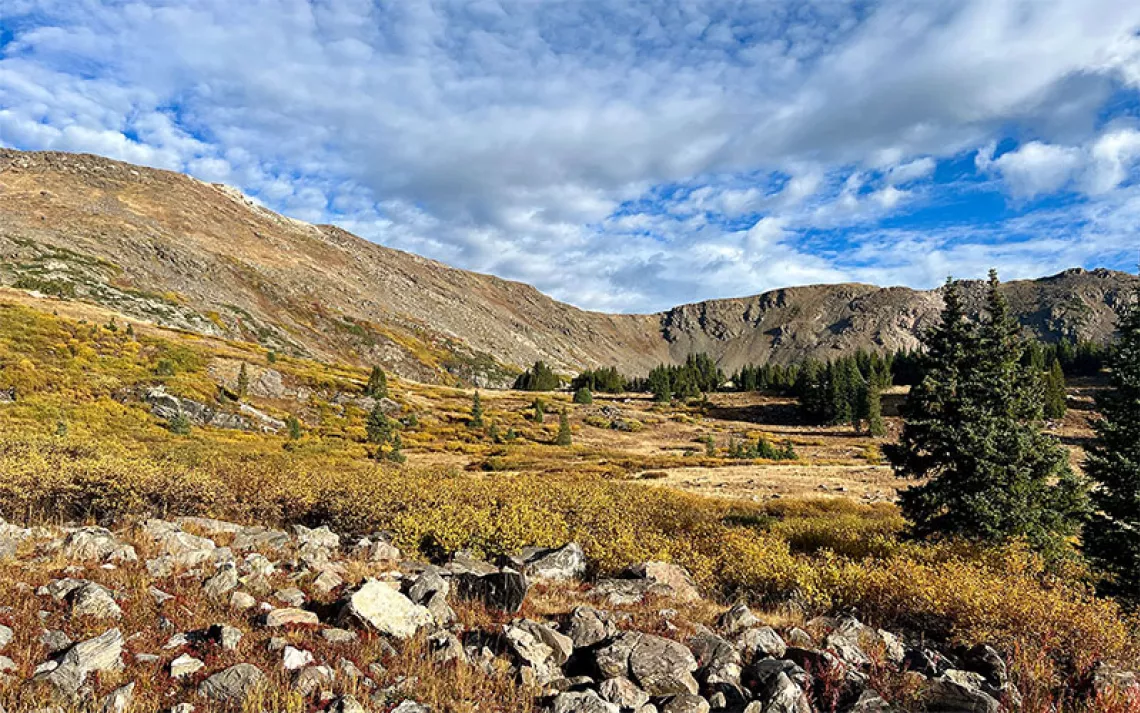Anger As a Climbing Tool
My pain may never go away. It would be nice if you'd at least acknowledge it.

Illustration by Katherine Lam
"Go up!" yells Abby, my belayer, as if what I need right now is a reminder of which direction a climber is supposed to go in. I've just slipped off a granite slab, and now I'm dangling 70 feet above the ground in a Colorado canyon, at eye level with a passing crow. Below, Abby grips my climbing rope while arching sideways, stretching her bad back. "Come on, already!" she taunts.
I know exactly what Abby's doing, because I do it to her all the time. She's trying to rile me up so I can harness the energy of that anger to reach my next handhold. What she doesn't know is that I was angry when I showed up today.
At a party last night, I listened to a man tell a story to people standing around a kitchen island. Hiking on a mountain the weekend before, he'd slipped on ice, skinned his knees and arms, and possibly fractured a bone, then hiked six miles back. He rolled up his sleeve to show us a scab. The people around me expressed admiration, or faked it, believing he'd earned at least that.
I have lived this moment many times before: a man enthusiastically telling me about his passing pain and then pausing for the positive reaction he thinks he deserves, and then me giving it to him. What irks me is that I can never talk like him. When I talk about my chronic pain, it's hesitantly, and my story is generally received with skepticism, pity, and half-formed advice. Many men say, "But you look fine." Maybe they think they're being complimentary—as if "fine" could be a compliment—but it feels like a challenge: How could I be anything other than how they see me?
When I first became sick six years ago, I didn't have the energy to be angry. Some doctors said my nonstop headache and joint and calf pains were symptoms of chronic Lyme disease. Others admitted they didn't know what was wrong with me. I tried many treatments, including antibiotics, antiparasitics, and a Chinese drug that I injected into the fat between my hip and my spine. None of them worked. Recently, I gave up on treatments altogether.
At the party last night, I deliberately set down my Scotch on the countertop and, for the first time in years, permitted my anger to grow. Why didn't I have the bravado to tell my story of dealing with great pain to these people huddled around a stand mixer? Why couldn't I expect the reaction he got? It's not so much the admiration that I want—just an acknowledgment of my pain.
Now, hanging off a cliff, watching a spider emerge from a cranny in the rock, I'm still angry. "Keep going," Abby yells. That's something I am used to doing. Every morning, I quietly devise ways to reaffirm a baseline contract with myself to just keep going, despite the pains that doctors say may never go away. This morning, a Saturday, I got out of bed because I'd made plans with Abby, and that meant my climbing shoes needed sorting. I placed the shoes on the kitchen floor, instructing myself to ignore my headache. I focused on how each shoe captured my foot smell a bit differently—a campfire, a rainstorm, a hog. Then Abby arrived, carrying a rope and a half-eaten egg sandwich.
Now for my next move, I need to shift my weight to the right and reach for a crimper. Just before I go for the crucial handhold, I let my anger balloon. Here is what makes me mad: I know the shape of the stand-mixer man's wound—a medallion—but not the particulars of Abby's spinal injury. I remember the intonation of every man who has questioned the severity of my pain and how I feel inexplicably flustered when discussing my symptoms. I have been made to feel weak, over and over again, even though, as I climb up to the anchor, shushing my pains, I know I'm strong. I've always known it, but this is the first time I've said it.
This article appeared in the November/December 2017 edition with the headline "Other People's Pain."
 The Magazine of The Sierra Club
The Magazine of The Sierra Club







